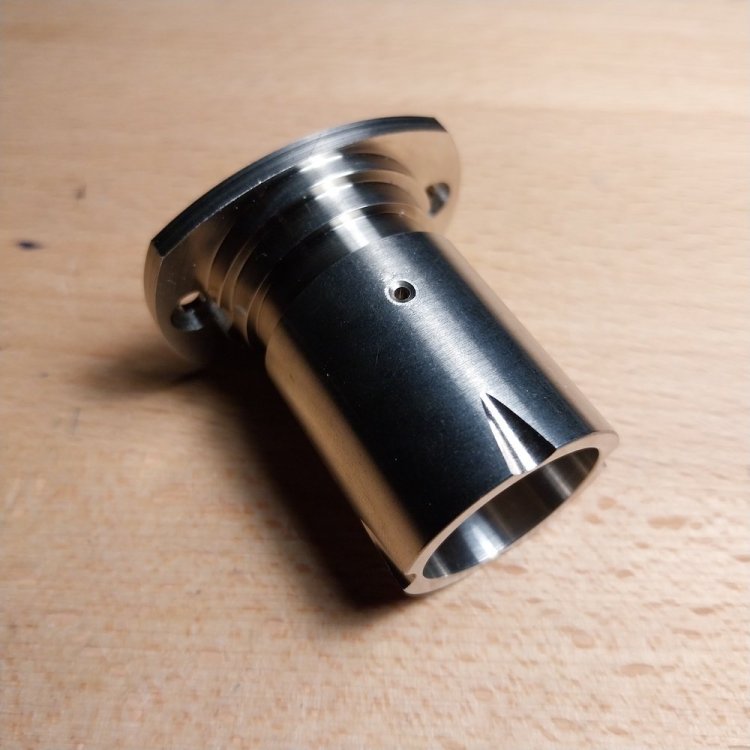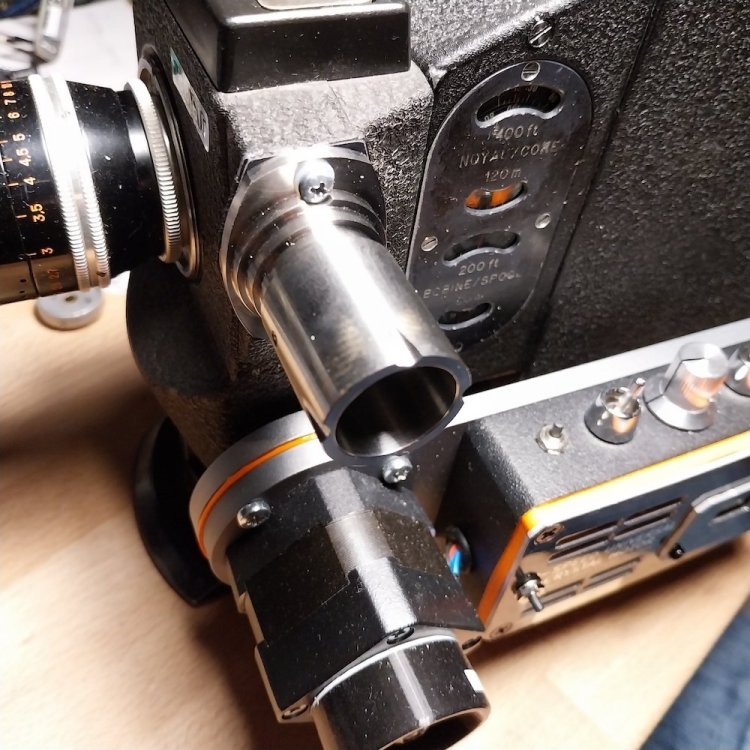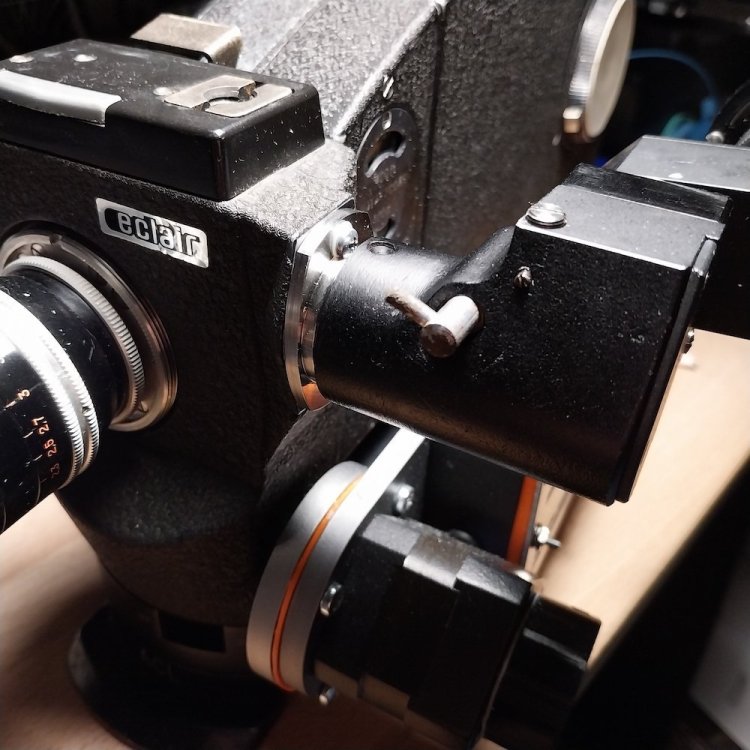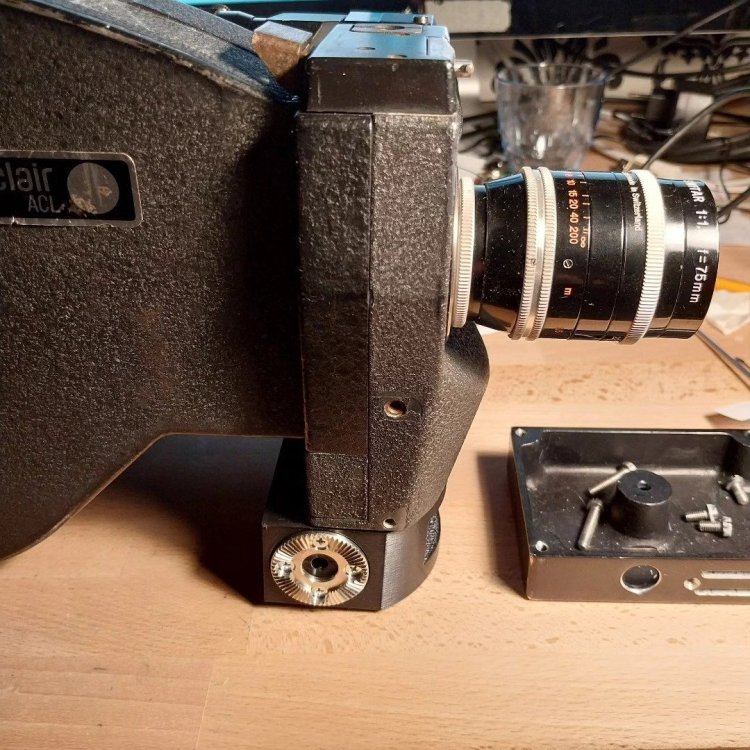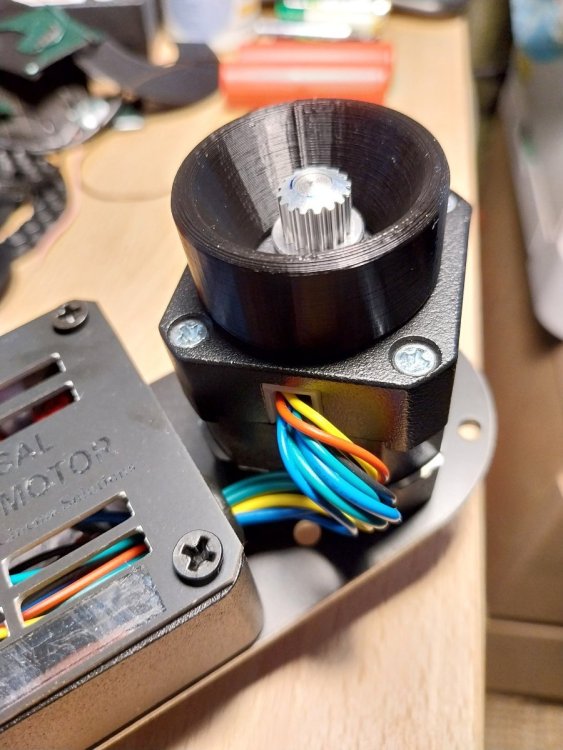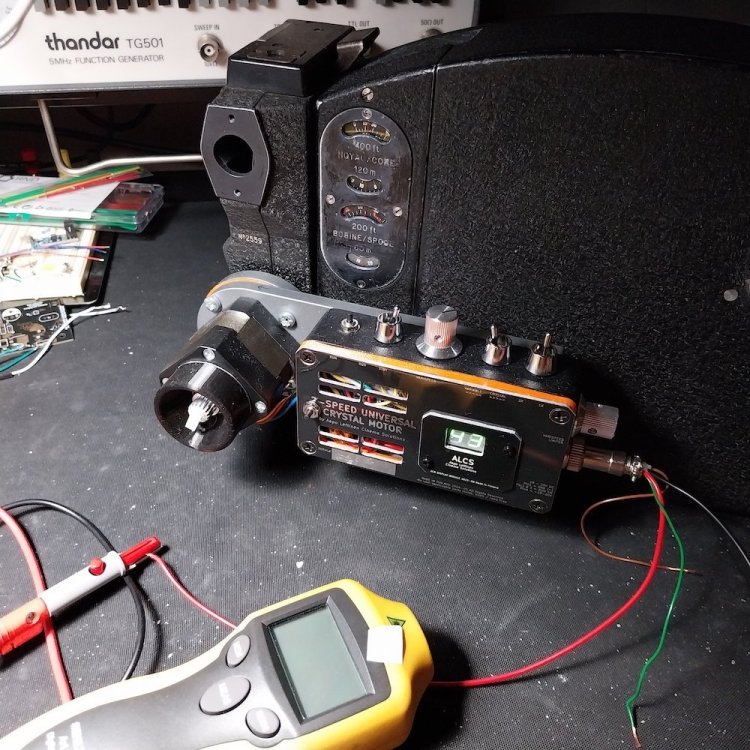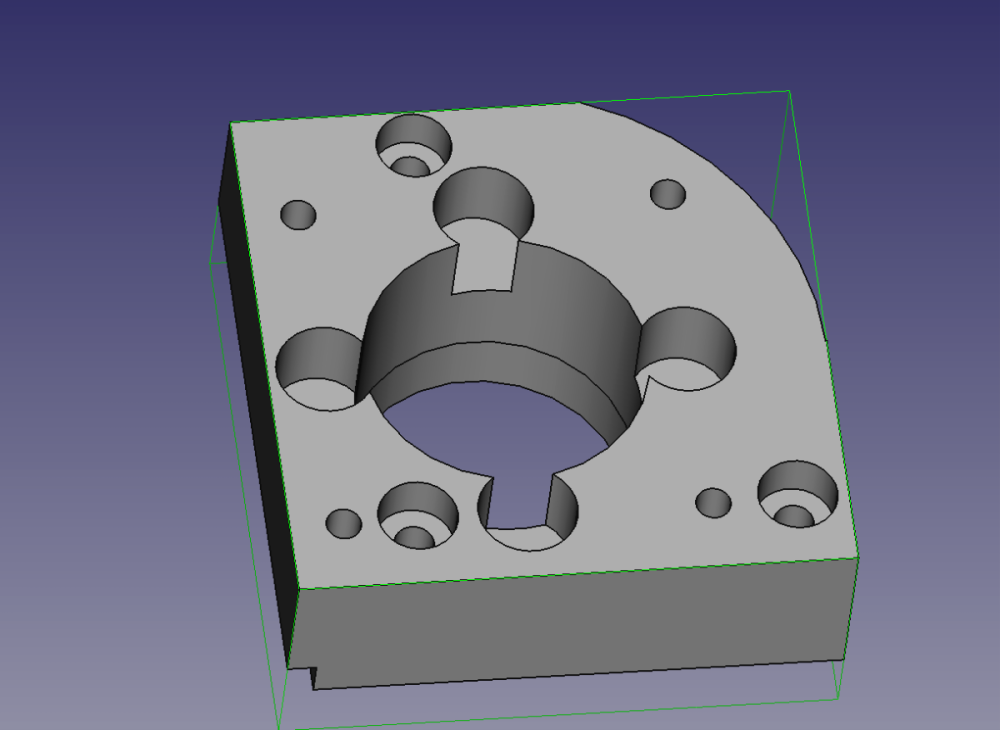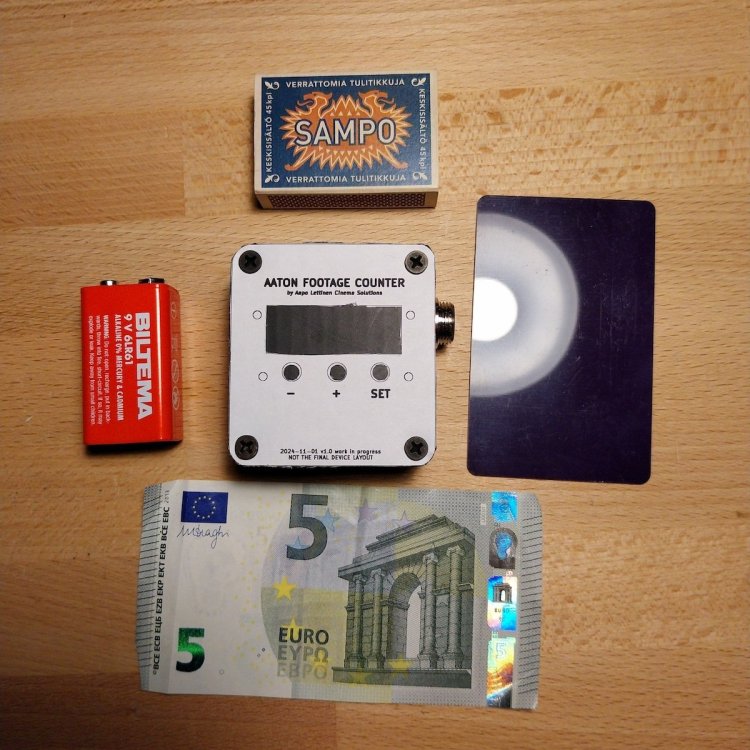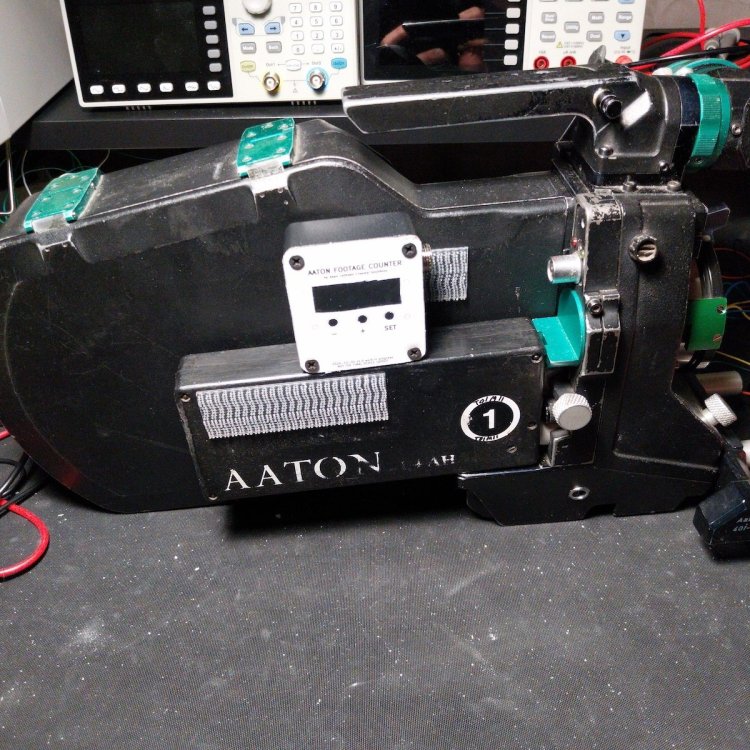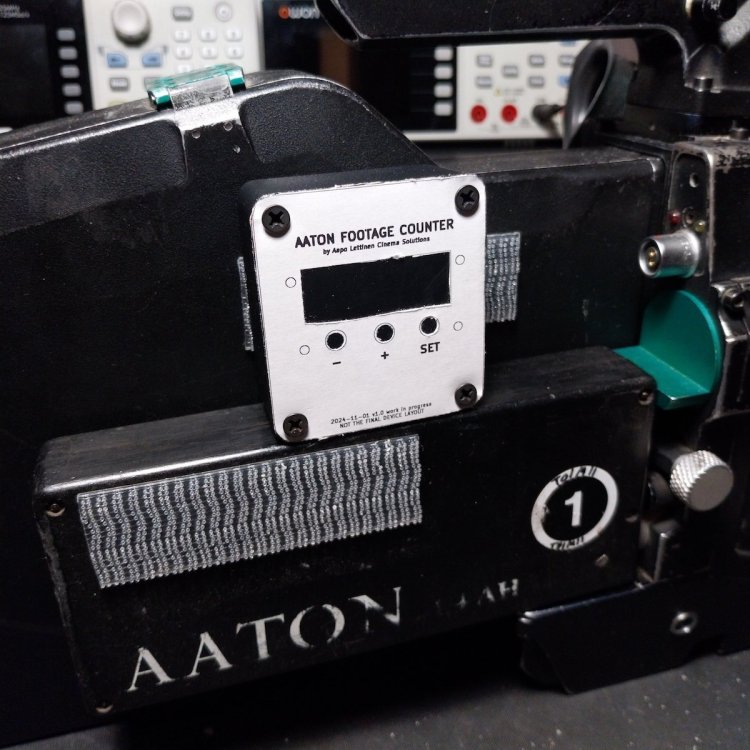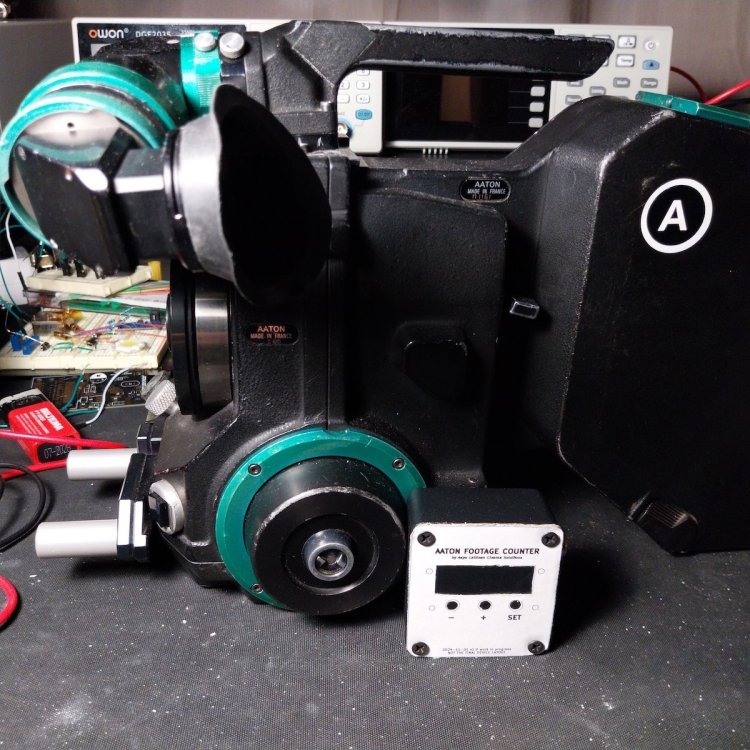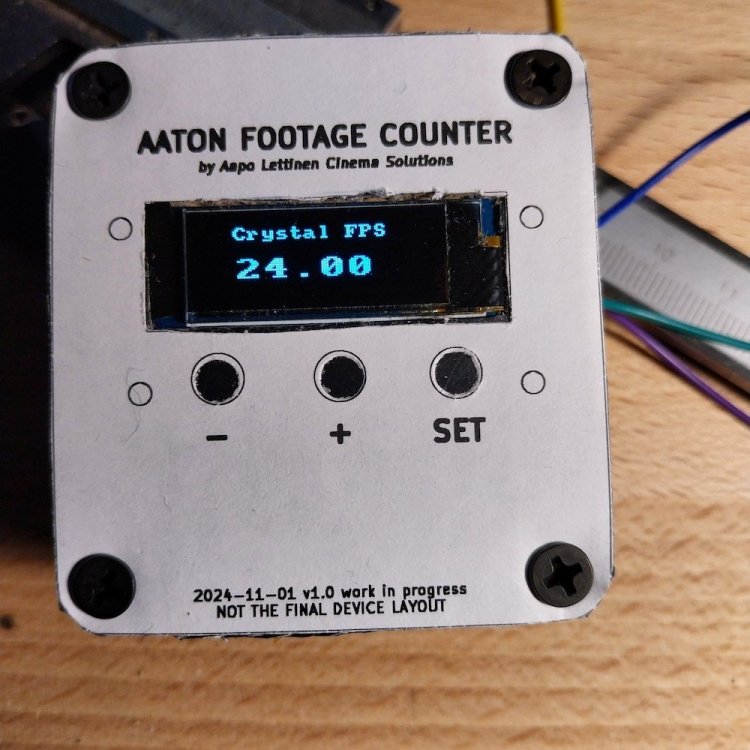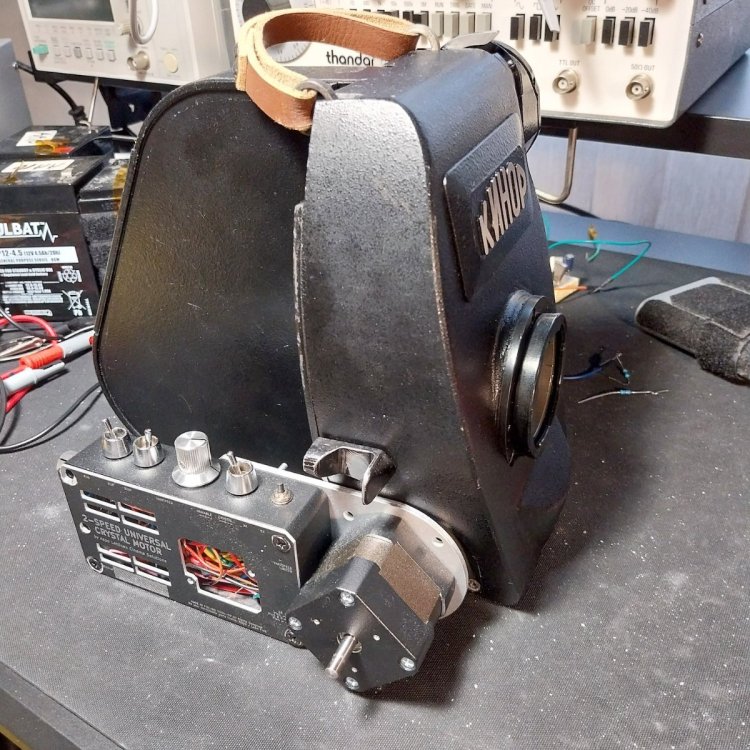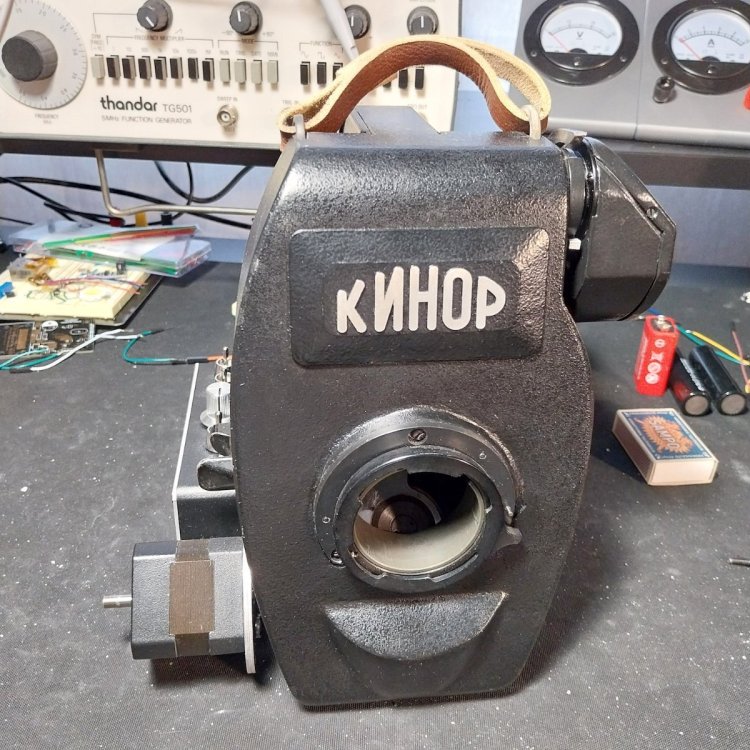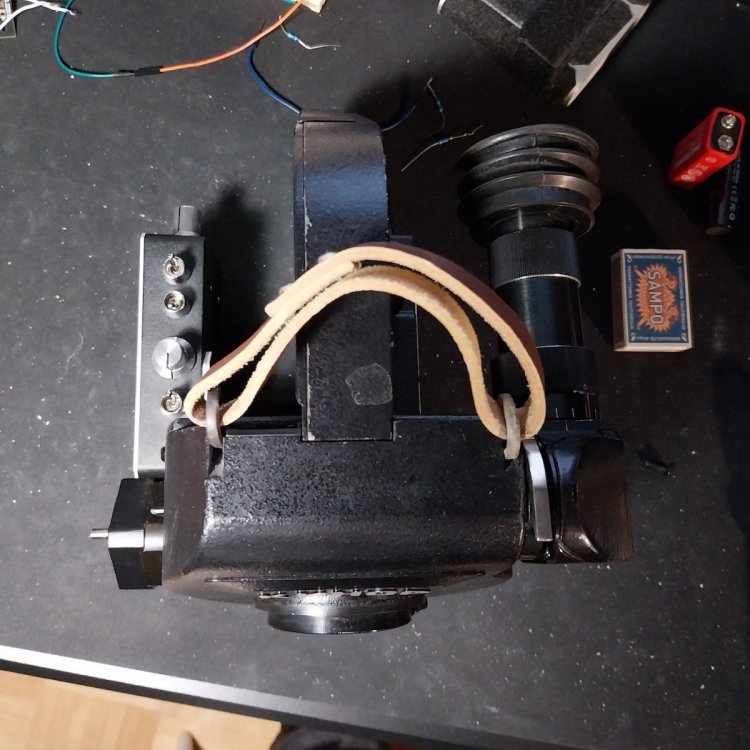-
Posts
3,334 -
Joined
-
Last visited
Everything posted by Aapo Lettinen
-
IMPORTANT UPDATE!!! The October-November has been so bad on most projects that THE 3-SPEED ACL MOTOR WILL BE CANCELLED. I want to avoid a situation where less that three motors would be ordered, that would create losses which would affect the Advanced model. So don't want to take the risk that the 3-speed generates losses which would negatively affect the Advanced model. So cancelling early on when no one has ordered the 3-speed yet! PRICE LOWERED ON THE ADVANCED MODEL. Based on the experiences with the cnc-machining-intensive NPR motor project, I found out that I can make the Advanced 15-speed ACL motor a little more affordable without affecting the finishing quality at all. NEW PRICE FOR THE 15-speed Advanced ACL crystal motor: 1600usd. NEW ORDERING DEADLINE: 5th January 2025. At least 300usd of the purchase prices needs to be paid when placing the order. If missing the deadline, late orders will be from 30% to 50% more expensive so please order in time if wanting this motor!
-
The final adapter for installing NPR finder on ACL camera. the optic block is removed from the original tube part and installed inside this one. CNC machined stainless steel :)
-

new ALCS compact crystal motor for Eclair NPR
Aapo Lettinen replied to Aapo Lettinen's topic in Eclair
Only couple of days left to order the 3-speed motor!! I started to run some basic tests with NPR camera body now. nothing final here yet and the motor drive etc will change but you can see how the cnc machined aluminium "skeleton" holds the weight of the camera body nicely https://www.youtube.com/watch?v=t-PJl0IQu3I -

new ALCS compact crystal motor for Eclair NPR
Aapo Lettinen replied to Aapo Lettinen's topic in Eclair
A little over a week left to order the 3-speed NPR motor version!! ordering for this version will close 1st December, it is absolute deadline as I need to order all the rest of the electrical parts for them then. It is a single-batch one-off version of this motor and won't be available later so pretty much the last chance getting one, there is no way getting these afterwards from anywhere :) -
Black Friday deal, will be more expensive later 🙂 an easy way to test the accuracy and stability of movie camera 's crystal sync. ordering by DM here or FB / IG
-
The work-in-progress ACL base for 15mm rods and Arri rosette. Couple of finished newer mounting plates for ACL motors, these are made for 2-speed and 10-speed models but they work with the 16-speed and 12-speed too if using different thickness spacer between the plate and the motor. The inching knob update includes a new motor axle, the bolt-on small inching knob and a 3d printed plastic protection collar which attaches to the motor with 2-sided tape. One needs to take the motor off the camera and open the motor drive to change the axle to this new one but it is not particularly difficult, just need to be careful to work in correct order 🙂
-
Decided to start a new thread because having some new stuff which is compatible with multiple different systems. INCHING KNOB UPDATE FOR OLDER 16-speed and 12-speed MODELS: it is possible to order a new motor axle for these motors. the new dual axle enables manual inching knob, similar than on my Universal Crystal Motor. Included in the update kit: the new dual axle for the motor, a basic 3-printed inching knob protector, and a small inching knob for manual inching. This is a really handy update as the original motors only had a machined slot on axle end to inch with a screwdriver or other tool, now with this update one gets proper knob for inching. User installable update, not particularly difficult to install and totally worth it. Available for order, I have couple of axles available and making inching knobs is relatively fast. Will need to calculate the exact price but somewhere around 200usd or so. CRYSTAL SYNC SOFTWARE UPDATE FOR THE 16-speed MODEL: the original 16-speed crystal sync software is tuned to maintain long-term sync well but it is slightly slow starting and needs more time to stabilize at the start of the take compared to the newer 12-speed motor model. The crystal sync software update converts the 16-speed model to behave very similarly to the 12-speed model's speedup and sync characteristics so that it is much more optimal for short takes with faster speed-up and faster stabilizing. Updating is a bit time consuming as I will need to partially disassemble the device and testing afterwards takes lot of time. Would require sending the crystal controller to me for the update but the motor unit can stay on the camera as I only need the controller itself here and might take some time depending on how busy I am. Price somewhere around 200usd or something like that. MOUNTING PLATE UPDATE FOR THE 16-speed and 12-speed MODELS: the original mounting system of these motors consist of multiple separate plates and the motor position is adjusted with nuts on the bolts. there is some open space between the plates so the axle can be seen. The new mounting plate is the same than my 2-speed and 10-speed motors use: cnc machined single piece aluminium plate which is sturdy and good looking and makes mounting the motor much easier. the plate attaches to the camera with the 4 original small screws and the motor is attached to the plate with four M4 screws. A dedicated spacer is used between the motor and the plate to adjust the exact distance between the motor and the camera. So no time consuming nuts adjusting needed, if the spacer is correct thickness it will work pretty easily. I will measure the exact spacer thickness and design them if there is orders for these plates. Price is somewhere around 100usd + shipping, takes a month or two depending on how much I have other stuff going on. NEW CAMERA BASE WITH 15mm ROD MOUNT FOR ALL MODELS (16speed, 12-speed, 2-speed, 10-speed and ACL2025) : this is a really cool new gadget which completely replaces the original base of the ACL camera. This new base is very compact and has 15mm lw rods mount which attaches to the front. Integrated Arri-style rosette to mount handles etc. directly to the base. I will try to include dual 3/8" tripod threads to the bottom if there is enough space. I am designing this accessory at the moment, will probably take a month or two but it is already possible to order them. Compatible with all my ACL camera motors, including the ACL2025 model which will be finished next Autumn. Price is 350usd.
-

Anyone need a Crystal Sync motor for Kinor 16CX cameras?
Aapo Lettinen replied to Aapo Lettinen's topic in Russian Gear
There was no interest towards the original Kinor motor modification so this project is discontinued. I will continue working on my Universal Crystal Motor system and there will be adapter gear available to use that motor with Kinor cameras. If you want original Kinor motors crystal modified, please contact Olex as he should have solutions available for the original motors for reasonable prices. If wanting to use my Universal motor system with the Kinor, there is couple of options available and delivery time typically about 2 to 3 months after payment. -

ALCS "Universal" Crystal Sync 2-speed motor for 16mm cameras
Aapo Lettinen replied to Aapo Lettinen's topic in 16mm
Modelling the adapter plate to mount Universal Motor to Kinor16 cameras. Already modelled the axle connector fitting the camera 🙂 -
the Universal motor with ACL: https://www.youtube.com/watch?v=_qCC9yQgtn0
-

ALCS "Universal" Crystal Sync 2-speed motor for 16mm cameras
Aapo Lettinen replied to Aapo Lettinen's topic in 16mm
the universal motor with Eclair ACL: https://www.youtube.com/watch?v=_qCC9yQgtn0 -
This "advanced" speed controller project is delayed at the moment and not sure when I can resume working on it. There was not enough interest to continue with it for now but hopefully can resume the work next year! In the meantime I am working on a simple Aaton footage counter which has basic crystal speed generator built in. A little over 10 crystal speeds is planned, and it has up or down switchable footage counter switchable between ft and meters and a simple battery voltage meter. It is compatible with some Arri cameras too, at least SR1 and SR2, but I will develop and test it with Aaton so the Arri users will need to test the crystal speed generator on their own and report back to me to confirm that it works perfectly. The device has a affordable intermediate connector so that it is easy to make your own cables for it. does not include fischer cable but includes a cable which has this intermediate connector and you can solder your fischer connector to the other end. extra intermediate connectors are also included. This simple counter device WILL be made as I already have orders for it, but it is preorder-only like my other stuff so will need to be ordered now if interested in it. Price range about 450usd including shipping. There is very short developing time with this one so LET ME KNOW IN NOVEMBER2024 if wanting one, I will need to start ordering materials soon and likely don't have extra ones available later.
-
More info about the ACL2025 project! • ordering deadline for 3-speed model with 24fps, 25fps, 33.333fps, 1fps, single frame, shutter parking etc: 30.December2024. Price is 1300usd + shipping, at least 300usd needs to be paid when placing the order and the rest paid in one or two parts, at least before May2025. Motors shipping in August-September2025. • Ordering deadline for Advanced (about 15speeds) model with 1fps, single frame, shutter parking, oled display with footage counter and battery voltage etc. : 30.December 2024. Price 1900usd + shipping, at least 300usd need to be paid when placing the order and the rest paid in one or two parts, at least before May2025. Motors shipping in August-September2025. Both models work at 12v and they work without any original ACL base electronics or mounting plates. will only need the 4 original screws used to mount the motor plate to the camera body and the rubber axle coupling are needed from the original motor system. Deadline for the 3-speed motor orders is strict, not possible to order anything later if missing the 30.December deadline. The basic model has very little budget margin and would cause losses if the schedule does not hold. With Advanced model it might be possible to order after 30.December but the price will be higher, at least 30% higher but can be lots more, even 50% higher. Late orders cause financing and cashflow issues which cost me a lot so late ordering is not guaranteed and if possible it will in any case be costly. I am concentrating on the crystal sync electronics of these devices now as it is more critical for the schedule to get the circuit board designs forward. Will post some 3d prints of the outer body design at some point but cnc machining tests will be delayed to next year at this point to streamline the budget.
-

ALCS "Universal" Crystal Sync 2-speed motor for 16mm cameras
Aapo Lettinen replied to Aapo Lettinen's topic in 16mm
I am making Kinor mounting parts for the Universal motor at some point. But I can speed up the process if there is someone wanting to order a Kinor version, if ordering the Advanced motor with display one would get the Kinor mounting parts free of charge. Let me know by DM here or fb/ig if needing one 🙂 ps. by my tests it looks like the Universal Motor works pretty well at low framerates with 14.4v batteries. so one could shoot at least 24fps crystal sync with a 14.4v v-lock battery. probably a bit higher too but need to be tested with the specific camera model used how high it can go with a certain battery. the Universal motor can reach typically about 80fps in wild variable mode with 18v or 19v battery and top crystal framerate with 18v to 19v battery is either 50fps (2-speed) or 66fps (Advanced model) -
I have one of these 50-speed Aaton controllers available. packaged and ready to ship with manual, cable to mount to the pins of Amphenol9 connector and includes spare intermediate 4pin connectors. Can send in 2 days after receiving payment. Similar device than these but marking colours may be slightly different. Price 320usd including shipping. let me know by DM. likely the last such device available for sale as I replaced it with more expensive models. It has been tested with LTR and XTR but should be compatible with other Aaton cameras too if making different cable for it (does not work with A-Minima or Penelope but other Aaton models should be fine. so LTR, XTR, Prod, Xtera and 35-3 should work fine with this)
-

new ALCS external footage counter for Aaton cameras
Aapo Lettinen replied to Aapo Lettinen's topic in Aaton
-
ACL2025 motor project update with 3-SPEED MODEL! will make some changes because the world politics affecting material prices etc. and because I am streamlining the development of various projects. SCHEDULE: The motors will be finished couple of months earlier than originally planned. Originally they were meant to ship in December2025 but I rescheduled the finishing to August-September2025. The motors use partially same technology than my NPR motors so I am integrating the projects more tightly together to save on developing costs and making better end products. PRODUCT UPDATES: the "Advanced" model will stay the same with at least 10 crystal speeds (the current plan is about 15 crystal speeds or so) with oled display, film counters, shutter parking, single frame, 1fps, works at 12 volts, small and compact with cnc machined aluminium body and high quality brushless motor. price 1900usd like before. I am planning a 3-SPEED MODEL based on my Eclair NPR 3-speed motor. would have similar framerates: 24fps, 25fps, 33.333fps and 1fps, all crystal. shutter parking, single frame, works at 12 volts, cnc machined aluminium body and high quality brushless motor. price range: about 1300usd. ORDERING DEADLINES will change a little due to the earlier finishing date. More info later.
-

new ALCS external footage counter for Aaton cameras
Aapo Lettinen replied to Aapo Lettinen's topic in Aaton
Will have basic crystal speed generator included, probably about 10 crystal speeds with most used ones like 23.976, 24.00, 25.00, 29.98 and 33.333 fps included 🙂 -

new ALCS external footage counter for Aaton cameras
Aapo Lettinen replied to Aapo Lettinen's topic in Aaton
Some size reference photos with the cardboard front panel draft. As you can see it is really compact device 🙂 the items in first image for scale, the card is standard credit card size. The camera is LTR7 -
or you could try to get your camera custom modified with Absolutely-Way-Too-Wide-Shutter-Opening than the pulldown would allow for stable images, and have the shutter angle adjustable so that you can close it to normal position to get normal footage. so the shutter is not out of sync but you would for example use 200 degrees shutter angle with a pulldown which requires 144 degrees to get stable images! so in the beginning and at the end the film starts to move when shutter is still open. Rebalancing the shutter etc. would be lots of work so could be expensive but probably would be totally doable and this way you could get it adjustable mechanically with precision control
-
on Bolex it is possible to arrange uncontrollable "out of phase" effect by arranging the loop formers into closed or semi closed position when filming, thus the camera feeds the film to the gate during exposure to get various degrees of effect. It can jam more easily and there is no way to know how much of the effect you get (probably more than needed) but that is one way to get interesting stuff happening with a Bolex 🙂 on my first Bolex roll back then I forgot to open the loop formers and it was pretty heavy "out-of-phase shutter" type of effect so it can work but the result can be anything
-
for that kind of "out of phase shutter" effect adjustable by external accessory you would need electronically synced shutter (no mechanical link between shutter and movement so that it is easy to throw the shutter sync to any direction instantly) or specially build camera which has mechanical adjustment built on the shutter timing link for such special effects purposes. Arricams have this kind of fully electronically synced shutter which can be thrown out of phase it needed, but I don't know any other cameras which are intentionally built to allow this electronically as it is rarely needed effect anyway with mechanical links the adjustment is much more difficult to arrange. It is possible, however, to throw the shutter out of sync on pretty much any camera by opening the camera and adjusting the timing mechanically, most cameras allow this easily if done by a technician but it is way too difficult and time consuming to do on set so you would likely need one camera with shutter adjusted "permanently" out of sync and another which has normal timing. Don't remember how some Panavision cameras handle out-of-phase shutter effects, how they did it on Saving Private Ryan for example, was it easily adjustable on the fly or had they different camera bodies with different shutter tuning done beforehand?
-

Nolan to use new IMAX cameras on next film
Aapo Lettinen replied to Stephen Perera's topic in General Discussion
15perf IMAX is used on narratives because it helps marketing the film, it stands out and people think it would be a extraordinary viewing experience so they will more likely watch it and are prepared to pay extra for the experience. Nolan is just like everyone else, he does everything he can to help his films to gain attention and wide audiences. if it needs imaging technology exhibition circus on top of everything else, then so be it 🙂 -
looks like it! so they founded it when it was clear that the old company could not be salvaged it seems, the dates match the banckrupcy timeline and everything. Great that they are back now and can continue working with film!
-

new ALCS external footage counter for Aaton cameras
Aapo Lettinen replied to Aapo Lettinen's topic in Aaton
First draft of the front panel. A small Oled display and three control buttons. planned size of the device is about 56mm x 61mm x 30mm or so, same sized than my 50-speed Aaton crystal controller and small and lightweight enough to mount with velcro if needed 🙂



